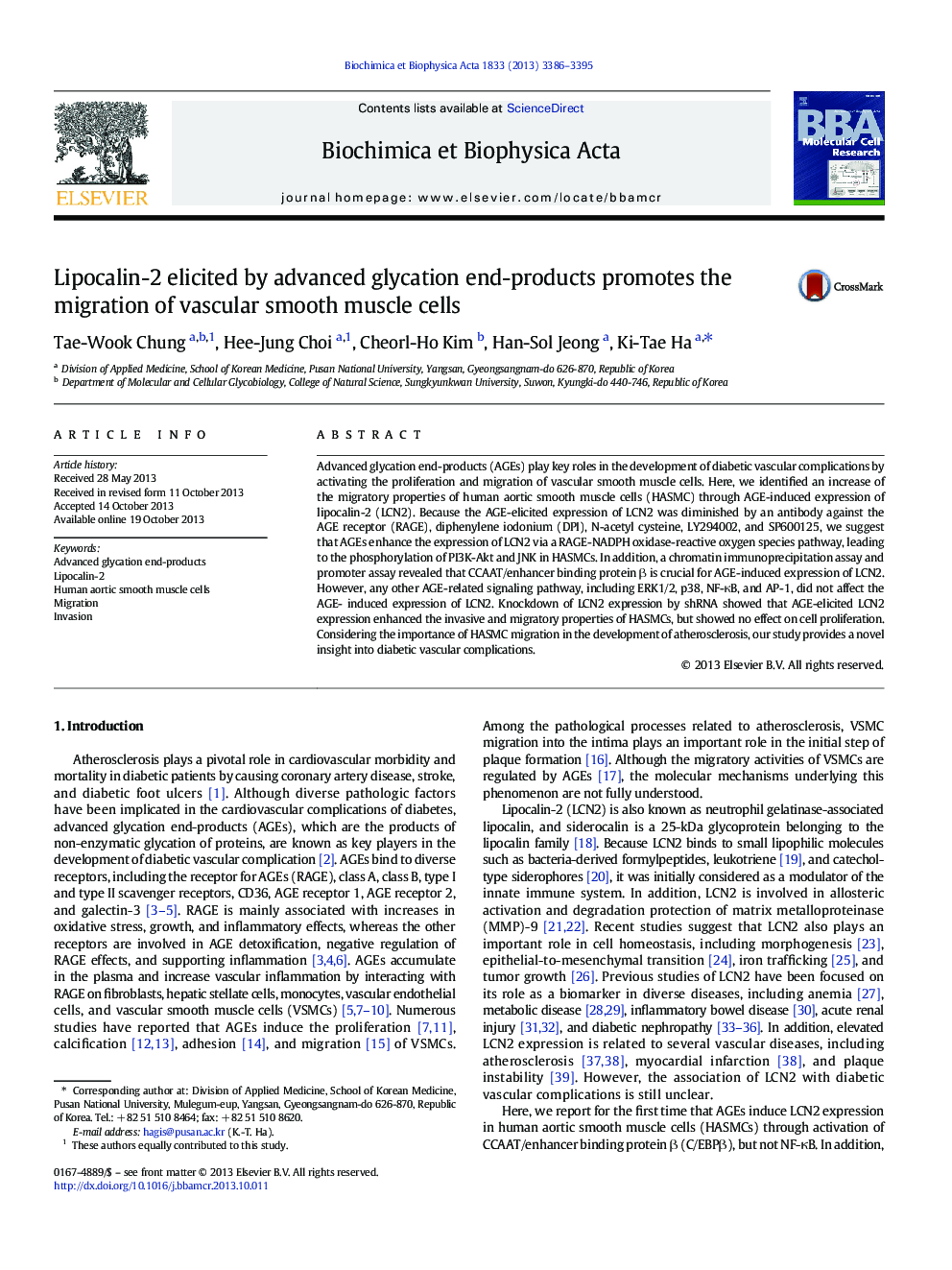| Article ID | Journal | Published Year | Pages | File Type |
|---|---|---|---|---|
| 8303970 | Biochimica et Biophysica Acta (BBA) - Molecular Cell Research | 2013 | 10 Pages |
Abstract
Advanced glycation end-products (AGEs) play key roles in the development of diabetic vascular complications by activating the proliferation and migration of vascular smooth muscle cells. Here, we identified an increase of the migratory properties of human aortic smooth muscle cells (HASMC) through AGE-induced expression of lipocalin-2 (LCN2). Because the AGE-elicited expression of LCN2 was diminished by an antibody against the AGE receptor (RAGE), diphenylene iodonium (DPI), N-acetyl cysteine, LY294002, and SP600125, we suggest that AGEs enhance the expression of LCN2 via a RAGE-NADPH oxidase-reactive oxygen species pathway, leading to the phosphorylation of PI3K-Akt and JNK in HASMCs. In addition, a chromatin immunoprecipitation assay and promoter assay revealed that CCAAT/enhancer binding protein β is crucial for AGE-induced expression of LCN2. However, any other AGE-related signaling pathway, including ERK1/2, p38, NF-κB, and AP-1, did not affect the AGE- induced expression of LCN2. Knockdown of LCN2 expression by shRNA showed that AGE-elicited LCN2 expression enhanced the invasive and migratory properties of HASMCs, but showed no effect on cell proliferation. Considering the importance of HASMC migration in the development of atherosclerosis, our study provides a novel insight into diabetic vascular complications.
Keywords
Related Topics
Life Sciences
Biochemistry, Genetics and Molecular Biology
Biochemistry
Authors
Tae-Wook Chung, Hee-Jung Choi, Cheorl-Ho Kim, Han-Sol Jeong, Ki-Tae Ha,
